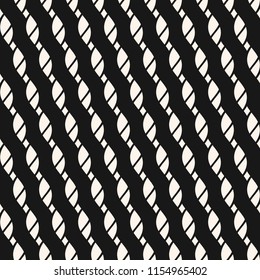

- BLACK LINE ON EDGE OF MOVIE TEXTURE UNITY EASYMOVIE 32 BIT
- BLACK LINE ON EDGE OF MOVIE TEXTURE UNITY EASYMOVIE FOR ANDROID
It’s the closest anyone’s come to making virtual reality into a palatable consumer experience. Gear VR is the most usable virtual reality headset I’ve ever tried, and the first to market after several years of hype. Gear VR headset is to dive into a world of 360° experiences.
BLACK LINE ON EDGE OF MOVIE TEXTURE UNITY EASYMOVIE FOR ANDROID
The development is only possible for Android platform using unity 3d and epic games unreal engine. Compatible devices are S7, S7 edge, Note5, S6 edge+, S6, S6 edge.

The headset was released on 27 November 2015. The Gear VR is a mobile virtual reality headset developed by Samsung Electronics, in collaboration with Oculus, and manufactured by Samsung. Google provides three SDK’s for developing Cardboard applications: one for the Android using Java, one for the game engine Unity using C#, and one for the iOS.įor latest updates on Google SDK : Google SDK Information In March 2016, Google released VR View, an expansion of the Cardboard SDK allowing developers to embed 360-degree VR content on a web page or in a mobile app, across desktop, Android, and iOS. To work, you just start your video (or whatever VR thing it is you want to view), pop your phone into the Cardboard, hold the device up to your face, and you are in the immersive VR mode.Īfter initially supporting only Android, Google announced iOS support for the Unity plugin in May 2015 at the Google I/O 2015 conference. The Cardboard is a platform that was developed by Google for use with a android smartphone. The Oculus DK2, Samsung Gear VR and Google cardboard (in the picture above) and later, HTC Vive, PlayStation VR(Project Morpheus), Oculus CV1 and many other VR headsets also got arrived in the consumer market. These are some of the headsets which opened up possibilities. From cheap mobile experiences to exuberant desktop machines, if you wanted to dive into a virtual world, there was a way. You also want to adjust your Pixels Per Unit setting to match the resolution of your tiles (for pixel-perfect results).In 2016, 21st-century virtual reality really arrived. You probably want to use the Grid - By Cell Size method, which is basically how this is handled inside Tiled. You can then click on the Sprite Editor button and cut the sheet into individual sprites using the Slice function (now separate, as of Unity 5.6). Therefore the SpriteMode should be set to Multiple. If this doesn't help, could you post a picture of your import settings?Īfter the import settings screenshot has been added, it seems to me the issue lies in the SpriteMode settings.Īs far as I understand, the image used is a Spritesheet in form of a tilemap.
BLACK LINE ON EDGE OF MOVIE TEXTURE UNITY EASYMOVIE 32 BIT
Select RGBA 32 bit if you need the alpha channel (transparency) or RGB 24 bit if you don't, to get your texture uncompressed.Īnd don't forget hitting that Apply-button! ) You can override this for individual platforms at the bottom of the texture's import settings. This is likely if it is a POT texture (Power of two resolution). You should choose "Full Res" for your current default settings.Ĭonsidering you already changed the filtering from Bilinear to Point (no filter), the issue may be that Unity compresses your texture by default. You can choose between "Full", "Half", "Quarter" and "Eight Res". You can also set the "Texture Quality" which defines the overall texture resolution in your project. The green tick shows what currently is selected as the default quality. The matrix on top gives you a selection of all current quality levels for the Editor itself as well as all build target platforms. Usually fiddling around with those values should help making your sprites look sharp and not blurred anymore.Īs pointed out, there are also default quality settings you can try. You can see that sizes above the dimensions won't have any effect, whereas smaller values will scale the sprite down, decreasing its visual quality. The next picture shows the differences between Sizes 512, 256, 128 and 64 for a Sprite with dimensions 423 x 467 If your sprite sheet is already smaller than the "Max Value", increasing it will have no effect though. It scales the dimensions of your sprite to not exceed the specified value. You can also try to increase the "Max Size" value for higher quality sprites. Here you can see differences between the different compression qualities, ranging from "Low" over "High" to "None" Increase the "Max Size" and maybe disable "Compression" or increase the quality of the compression. If that doesn't help, try messing with the quality settings in the Sprite Import. Here you can see the difference between bilinear and point filtering. Posting my comment as an answer after all.Īs I suggested, one way to get rid of blurring is to set the "Filter Mode" of the sprite to "Point (no filter)" instead of "Bilinear" or "Trilinear"


 0 kommentar(er)
0 kommentar(er)
